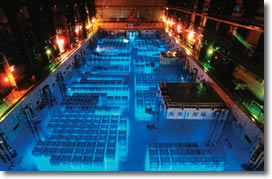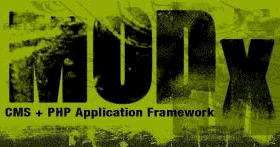» Notice anything different? I bet the site is loading snappily for you. More responsively. Zippier. That's cuz we're sitting on a new server. Our VPS has been transferred to a new (and improved) "parent node". Nice way to start the new year. Merry Christmas to us.
 Radified is still hosting with the same provider » WiredTree .. since Feb. 2008. (Four years ago, our old server was new.)
Radified is still hosting with the same provider » WiredTree .. since Feb. 2008. (Four years ago, our old server was new.)
A month ago, WiredTree upgraded their servers to the latest version of Virtuozzo, the virtualization software made by a company named Parallels (.. as in » parallel universe).
Virtuozzo makes it appear (virtually speaking) as tho Radified is/were sitting on its own private "dedicated" server [ "Mine! All mine!" ] ..
.. with all the freedom-of-configuration and power that is associated with low-level control (.. the kind that is normally hidden from users of Shared web hosting).
In other words, a VPS provides you with the advantages of a Dedicated server [ "Mine! All mine!" ] without the cost (« ~$150-to-300/month).
More complicated, sure, but after you ascend the learning curve, you wonder how you ever lived without it.
Virtualization is a very cool technology. It represents the 'V' in VPS. And it's what provides the VPS with its 'Privacy' (.. or, at least, makes it appear Private).
Note - tho totally unrelated, you may find it intersting (as do I) that the FILE SIZE of the black-n-crome stallion just above is much larger (35-KB) than all other graphics used on this page. These cars are so beautiful it seems a crime to heavily encode the photos. Arent they gorgeous?
Notice all the small HOLES in the photo above. That is what makes it so difficult to encode as a jpeg. I cropped this from a photo somebody took of the rear-grille of a Ferrari parked on the street. This way I didnt have to scale. Max quality.
The huge size is why I dont use this image on the home page, which I constantly struggle to keep light.
» Frustration after Virtuozzo Upgrade Problems
Anyway, something went awry with the Virtuozzo upgrade and it seems like we had one problem after another .. interspersed with dreadful periods of laggy performance. Perhaps the upgrade itself was problematic.
Realize that I am sensitive to site latency, so I tend to exaggerate any problem.
Not surprising tho. To have problems upgrading something as complex as Virtuozzo. I'm sure it's much easier to load onto a clean, virgin server.
 But once you start loading accounts (containers). An upgrade, especially a major one, seems .. fraught. I applaud them for trying, and having the confidence to pull it off.
But once you start loading accounts (containers). An upgrade, especially a major one, seems .. fraught. I applaud them for trying, and having the confidence to pull it off.
I like the techs at WiredTree (some more than others) and have much respect for their skills. Some of them are laser-impressive.
Most of all I like how they dont feed you crap about problems. I never feel like they're trying to blow sunshine up my butt .. like all my other hosting providers used to do.
But after a month, I started to get frustrated. When you pay $10 a month for hosting, you dont expect much. But when you pay $50 .. well, you expect more.
So I finally said, "This has been going on a while. If you cant fix the problem, maybe you should move me to another server."
» Moving Suks (Generally Speaking)
Which they did. "Would now be a good time?"
 As everybody knows » moving suks.
As everybody knows » moving suks.
And moving your site is never a pleasant experience. I put it right up there with a root canal.
There are always problems and unexpected glitches to work thru. Always staying up late. Long past tired.
But when THEY do it for you .. well, that's much nicer .. cuz they have the servers right there (downtown Chicago), and they have access to the server mojo .. cuz they know the mojo.
Sure, we still had some problems (like always), but nothing major. Mostly problems with upgrading cPanel/WHM, but I dont spend much time there.
[ They currently have a ticket open with the cPanel-folks .. to see why the upgrade wont take (even when "forced").
Cpanel update failure during updatenow file synccPanel/WHM is a server-configuration utility/program that makes it easy for you to host other web sites yourself (via Web Host Mgr) and administrate the server (via cPanel) without knowing the Shell (« powerful but dangerous low-level text-only command-line interface).
But I only have Radified on this account, so WHM is not a big deal to me. And the server is already configured just how I want.
The single installed version of cPanel/WHM is shared by all Containers on the node. Same goes for Virtuozzo and the Operating system (RedHat-ish CentOS). Unlike Apache, MySQL, PHP, Perl, etc, you cannot control the version of cPanel. I just learned that today.
The reason is because » "They require different versions of certain system libraries, which would cause all sorts of conflicts."
Update 15.Jan - they have cPanel techs working on it now. Copying me on the exchange between/with WiredTree techs (.. cuz it's my ticket). Very cool. Interesting to see how they approach the problem. ]
So! We are now sitting on a new dual-Westmere Xeon beast. Each Westmere comes with 4 processors. Dual Westmere's = 8 CPU's per server. (I am drooling all over my keyboard.)
 But most ISPs want you to use *their* SMTP server .. so they
But most ISPs want you to use *their* SMTP server .. so they 



 But let's back up a bit. What's known today as
But let's back up a bit. What's known today as 

 This is because Radified began as a learning experience .. to learn-by-doing. (Which is the best way to learn.) So learning new,
This is because Radified began as a learning experience .. to learn-by-doing. (Which is the best way to learn.) So learning new, 
![Reblog this post [with Zemanta]](http://img.zemanta.com/reblog_e.png?x-id=17d6a3a1-da93-46e4-90f3-5e03f052ea0f)
 Every file and folder on a
Every file and folder on a 
 I decided against upgrading
I decided against upgrading 